HPE Aruba Instant On 1960 48G 2XGT 2SFP+ Switch Internal Hardware Overview
Inside the switch, we see a fairly large PCB, a small power supply, and a good amount of unused space. These switches also come as PoE versions (JL809A) so having the additional space is likely for the larger power supplies used in PoE switches.
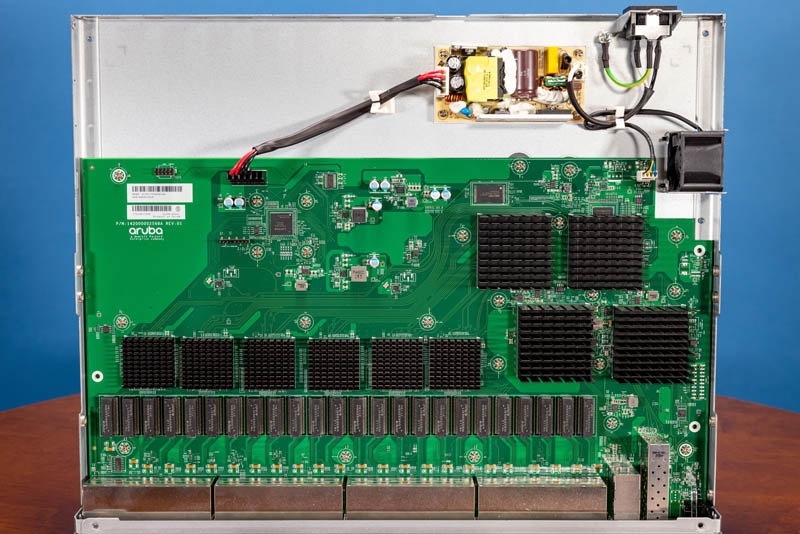
Perhaps the notable feature here is the fan as well. The 24-port version that we will review next is fanless, but the 48-port model needs a fan. This fan spun up at boot, but then spun down to very low volume levels after it settled. Aruba did a great job on the fan noise with this switch, and it is something welcome given how many 25GbE/ 100GbE and faster switches we have reviewed recently that sound like jet engines. Aruba specifically designs these switches to be usable within earshot of customers and employees and that is appreciated in the SMB space.
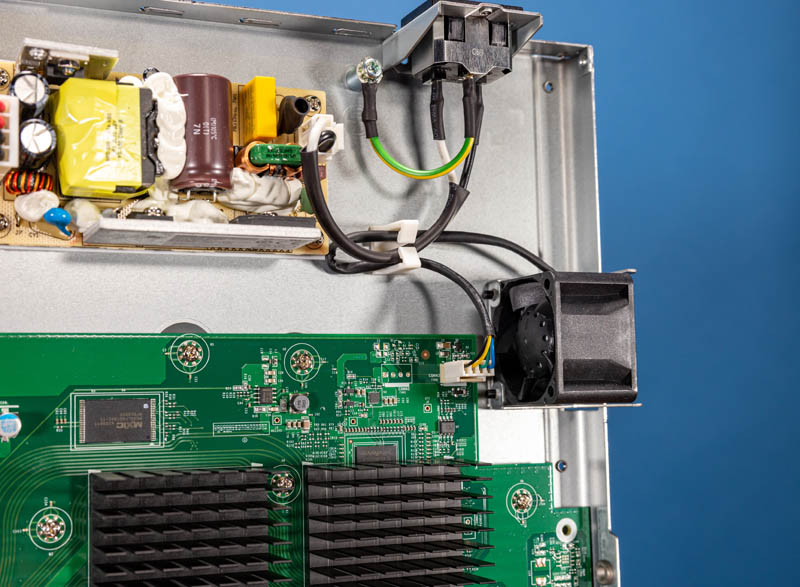
On that fan, there is an important design element. Instead of directly pulling or pushing air over heatsinks, it is offset from the heatsinks and the power supply. This design is just to cycle air. This is a low power switch (<13W at idle) in a large chassis so this is a different cooling approach compared to leaf/ spine switches that we review.
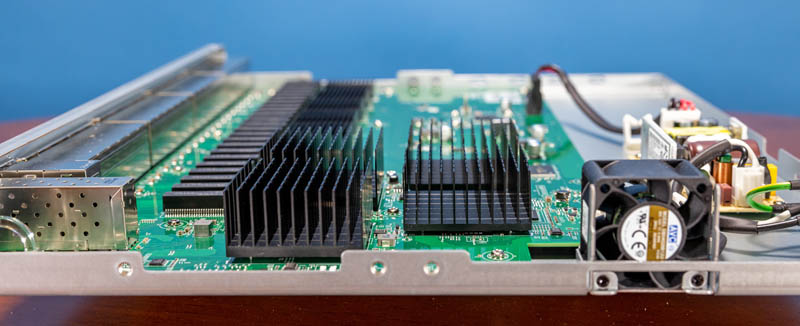
Here is the view from the opposite angle.
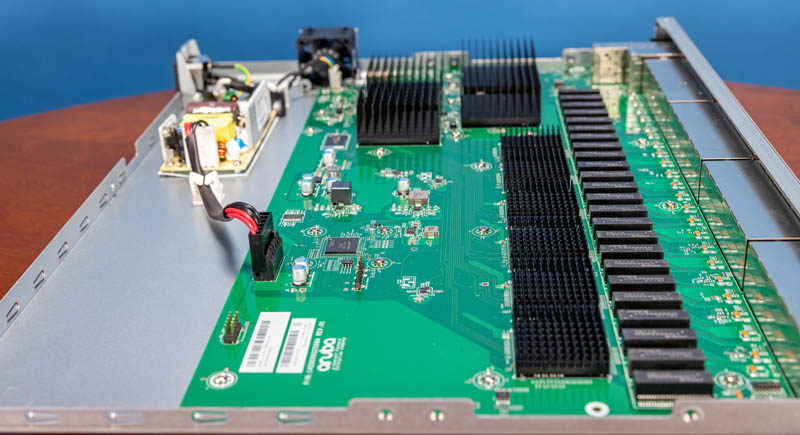
The power supply is a relatively small unit. We will again note it is not hot-swappable nor is it redundant. This is a SMB edge switch so that is common.
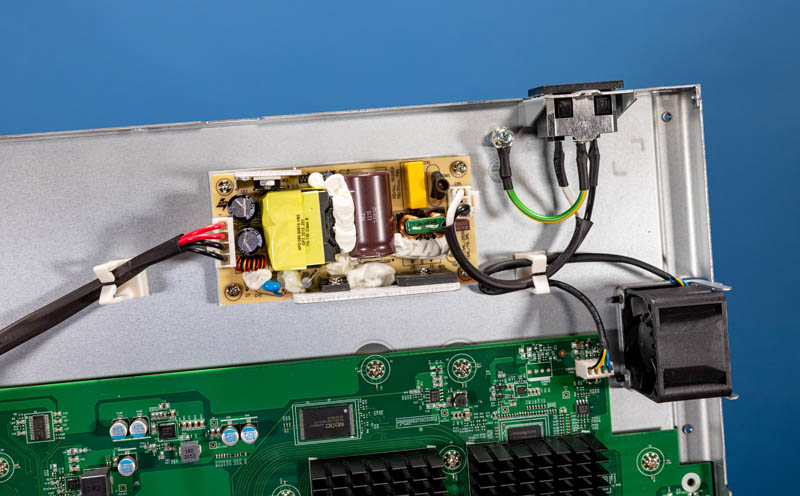
The main PCB has ports, switch chips, and a management processor.
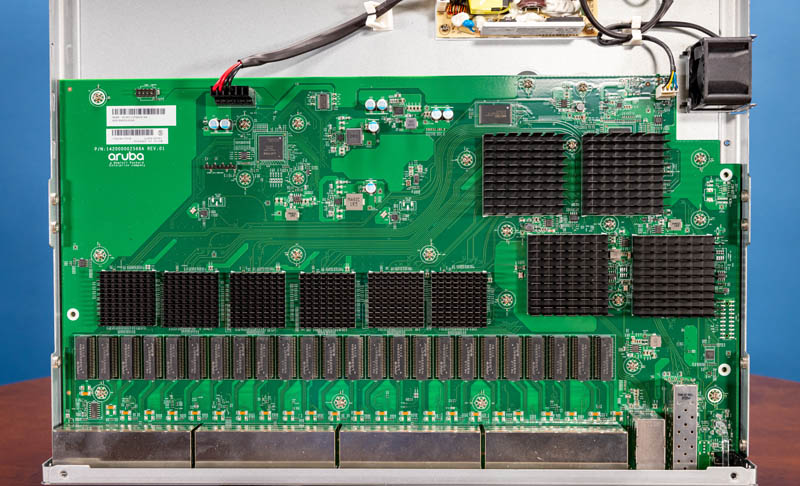
The heatsink closest to the fan likely has the management processor (an 800MHz single core Arm Cortex-A9) as that has the DRAM package next to it. These heatsinks we did not want to risk removing since this switch has to go back to HPE.
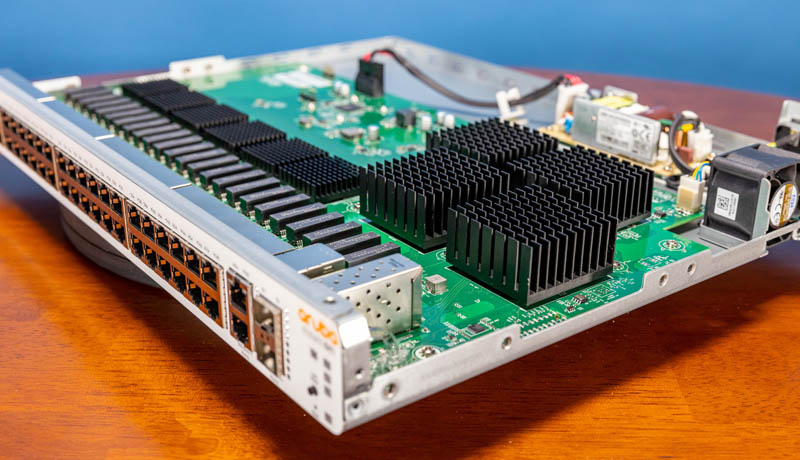
Still, we will give you another view of the heatsink fin forest of the switch. We wish we had the PoE version as that would have more going on internally.

Next, let us get to the management aspects of the switch because that is certainly a high point.




Do you have any insight into how well the more ‘advanced’ features work?
Things like the InterVLAN Routing, ACL rules, Stacking, and if that stacking supports MC-LAG?
The 1960 12XGT 4SFP+ (JL805A) Looks like an interesting model – ideal as a core for a small business, or connecting multiple servers, and then using the SFP+ ports to uplink to other switches?
Be interesting to see a review of that
Aren´t these switches essentially the same as the HPE Officeconnect 1950 series, but with a different (cloud) firmware.
JL805A – 1960 12XGT 4SFP+ vs JH295A – 1950 12XGT 4SFP+
Rather have a Ubquiti unifi for SMB. Unifi has better pricing more features, like you mentioned superficially POE. Additionally, where were these switches a couple of years ago? Late to market HPE/Aruba.
@Joeri – yes, but that goes for the whole of the 1960 line – e.g. JL808A = HPE OfficeConnect 1950 48G 2SFP+ 2XGT Switch JG961A.
There wasn’t much coverage of the 1950 line either, so would be interested to see some more coverage and what sort of limitations the range has.
I’m looking at the earlier 1930 24-port model as a replacement for an existing location that used unmanaged switches. Other than the 10GBase-T ports and stacking option, are there any differences in performance and OS features between the 1930 and 1960 lines? For more than twice the price of a similar 1930 on Amazon (and almost as much as the 1930 48-port with PoE) I’d expect quite a bit more from the 1960.
I think the value is higher in the Poe versions. Poe++ and 600w budget on 48 ports for 1800 with a killer warranty. We just picked one up for 1800 on b & h